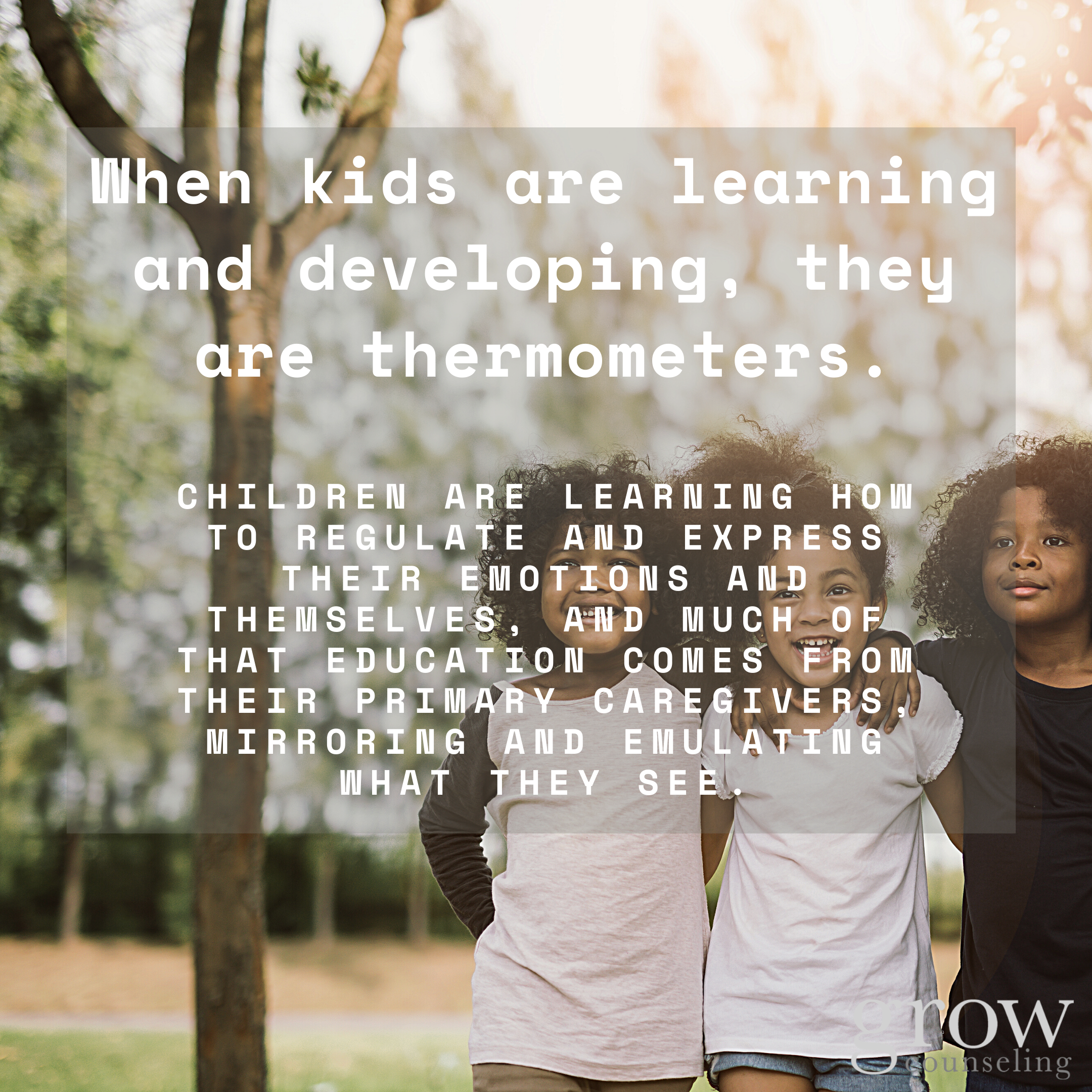In a previous blog, we discussed the idea of being a thermostat versus a thermometer—setting the temperature and being able to adjust versus automatically taking it on, specifically when it comes to our emotions and circumstances. We addressed the benefits we can experience ourselves when we are able to respond instead of react and set our own temperature, but in reality, the benefits go beyond us—specifically with kids.
As adults, we hold responsibility for our own well-being, and therefore, we have to choose to be our own thermostat and set the temperature for ourselves. We can be in mutual relationships, knowing that connection is healthy, and simultaneously that we are responsible for our own feelings.
When kids are learning and developing, they are thermometers.
They take the temperature of the room and react. Kids are incredibly observant, and pick up on almost everything. This reality makes the caregiver’s role as the thermostat even more significant. Children are learning how to regulate and express their emotions and themselves, and much of that education comes from their primary caregivers, mirroring and emulating what they see.
A caregiver acts as the thermostat by providing structure and routine, attunement, consistent responses, and by practicing their own affect management.
When the “temperature” (the expectation of what is going to happen next, or the example of how a caregiver is responding to a situation) is set, it allows kids to feel safe and begin learning how to meet the caregiver at the set temperature, or responding in healthy ways.
The reality is, as adults and caregivers, we aren’t going to be at the “perfect temperature” all the time. We will have bad days, we will react instead of responding, we’ll forget we are the thermostat and revert to being a thermometer from time to time.
The good news is that while our goal is to stay steady, we can still adjust if and when we find ourselves setting the wrong temperature in a situation with ourselves, our kids, or our lives.
Written by: Courtney Hintermeyer

